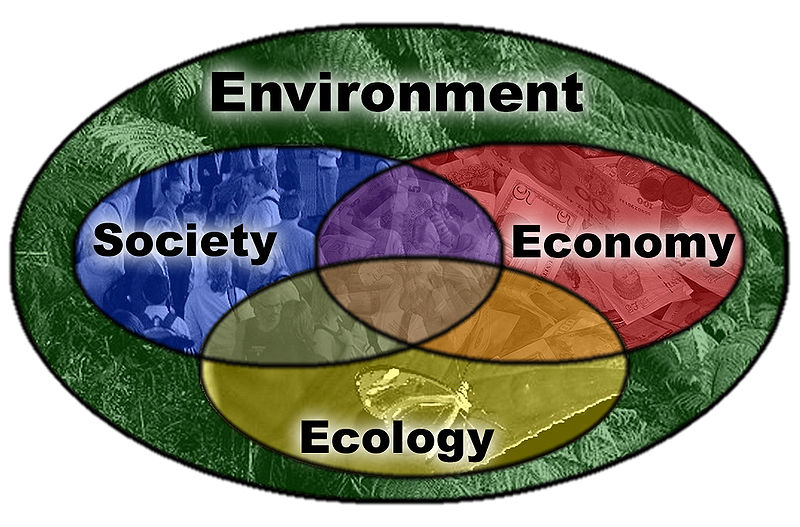 “Business can be the most powerful agent for change, and if business doesn’t change, then I think we’re all doomed,” Rose Marcario, Patagonia’s CEO said. “Business that puts profit above people and the environment is not going to be a healthy and sustainable way for us to live and for the planet to survive.”
“Business can be the most powerful agent for change, and if business doesn’t change, then I think we’re all doomed,” Rose Marcario, Patagonia’s CEO said. “Business that puts profit above people and the environment is not going to be a healthy and sustainable way for us to live and for the planet to survive.”
One would expect to hear that from a company that focuses on clothing and gear for the outdoorsy types: hikers, rock climbers and divers. And it’s that kind of thinking that put Patagonia high up on the 2014 Sustainability Leaders Report. But the top spot for the fourth year in a row, and this year with a considerable margin, has gone to Unilever, a multinational company with brands like Lipton, Dove, and Omo which for all intents and purposes have very little to do with the environment.
 Unilever CEO Paul Polman correctly points out that with the Earth’s increasing population, we are putting larger and larger strains on our natural resources. “Business must make an explicit positive contribution to addressing [challenges around energy supply, food security, and economic inequality,” he says. In order to do this, in 2011, they designed the Unilever Sustainable Living Plan (USLP) which has concrete targets they hope to achieve by 2020. Interestingly, the USLP isn’t just focused on reducing environmental impact, but also includes improving health and well-being and enhancing livelihood—broadening the definition of sustainability to look not just at the environment, but also individual and societal sustainability. They’ve also created partnerships with non-profits and NGOs (UNICEF, Save the Children etc.) and governments, as well as working with retailers where their products are sold and directly with consumers.
Unilever CEO Paul Polman correctly points out that with the Earth’s increasing population, we are putting larger and larger strains on our natural resources. “Business must make an explicit positive contribution to addressing [challenges around energy supply, food security, and economic inequality,” he says. In order to do this, in 2011, they designed the Unilever Sustainable Living Plan (USLP) which has concrete targets they hope to achieve by 2020. Interestingly, the USLP isn’t just focused on reducing environmental impact, but also includes improving health and well-being and enhancing livelihood—broadening the definition of sustainability to look not just at the environment, but also individual and societal sustainability. They’ve also created partnerships with non-profits and NGOs (UNICEF, Save the Children etc.) and governments, as well as working with retailers where their products are sold and directly with consumers.
Patagonia has taken a similar tack by educating consumers (remember their Don’t Buy This Jacket ad that came out in the New York Times on Black Friday in 2011?), cleaning up and thoroughly investigating their supply chains, and advocating for sustainable government policies through the Vote the Environment campaign.
 This is all well and good, but there surely must be a cost to taking on all these “externalities.” Not so. Patagonia has doubled its operations and tripled its profits since 2008. Meanwhile Unilever brands that are integrating sustainable living into their core purpose all performed well in 2013. For example, Lifebuoy, Dove, Comfort One Rinse and Pureit all grew by double digits. This is well above the company average.
This is all well and good, but there surely must be a cost to taking on all these “externalities.” Not so. Patagonia has doubled its operations and tripled its profits since 2008. Meanwhile Unilever brands that are integrating sustainable living into their core purpose all performed well in 2013. For example, Lifebuoy, Dove, Comfort One Rinse and Pureit all grew by double digits. This is well above the company average.
Polman says, “Three years into our plan, we are proving that there is no contradiction between sustainable and profitable growth. We are seeing increasingly how sustainability drives the growth of our brands, reduces our costs and manages our risks. We are learning how taking a long term approach not only strengthens our business but also enables us to make a positive contribution to society at the same time.”
There is much to be learned from Unilever’s Sustainable Living plan which you can access here and Patagonia’s environmental and social responsibility approach accessible here. What of their plans can you integrate into your business?

